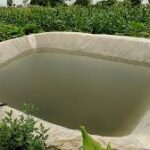RAIN WATER HARVESTING
Be Kind NGO takes an innovative approach to rainwater harvesting, interlinking rivers and water bodies to capture precious 'run off' so that it is not wasted, and harnessing old 'mined out' pits as large water storage facilities. We assess and map the unique terrain and topography of each community and tailor rainwater harvesting interventions to the unique needs of the area.
In India, rainwater harvesting has been in practice for more than 4000 years. It is basically a simple process of accumulating and storing of rainwater. Rainwater harvesting systems, since ancient times, has been applied as a supply for drinking water, water for irrigation, and water for livestock. The systems are easy to construct from locally sourced inexpensive materials, and it has proved to be a success in most areas. The prime advantage of rainwater is that the quality of water is usually good, and it does not necessitate any treatment before consumption. Household rainfall catchments can significantly contribute where the source of drinking water is contaminated and scarce.
More or less all states in India, through various legislative decisions, have made rainwater harvesting mandatory in government institutions, commercial complexes, and residential high-rises. Some of these laws have already come into effect, and others are soon to follow.
The Central Ministry for Drinking Water and Sanitation, in association with the Central Ground Water Board, and a battery of groundwater scientists and experts, has also prepared a conceptual document called the ‘Master Plan for Artificial Recharge to Ground Water in India’.
The master plan, related to rainwater harvesting and artificial recharge of groundwater, envisages the construction of about 23 lakh rainwater harvesting structures in rural areas, and close to 88 lakh artificial recharge and rainwater harvesting installations in urban centres.
Since natural resources like rainwater come free of cost, it seems like modern human beings forgot its valuable contribution, and the need to save it. Green living with new water-saving technologies and lifestyle is also catching on. In a world that is reeling under extreme water crisis, cities and communities across the globe will have to become more aware of rainwater harvesting, storing, and consciously using water.




